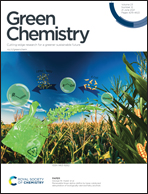Controlled release of herbicides by 2,4-D-, MCPA-, and bromoxynil-intercalated hydrotalcite nanosheets†
Abstract
Volatilization and leaching are two critical pathways for pesticide transportation from their applied areas to non-target regions. Nanocarrier-based formulations can improve the use efficiency and reduce the off-target effects of pesticides, however, the complicated preparation process seriously restricts the large-scale application of nanopesticides in the agricultural field. In this work, taking 2-(2,4-dichlorophenoxy) acetic acid (2,4-D), 2-methyl-4-chlorophenoxyacetic acid (MCPA), and 3,5-dibromo-4-hydroxybenzonitrile (bromoxynil) as model herbicides, herbicide-intercalated Zn–Al hydrotalcites (herbicide@HTlcs) were facilely fabricated by a modified co-precipitation method without heating, aging, organic solvents, and inert gas. The obtained herbicide@HTlcs showed high entrapment efficiencies (71.7%–86.7%), a sheet structure with an average size of 339.4 nm, and positive surface charges (+40.5). The volatilities of herbicide@HTlcs were reduced more than 3-fold compared with those of pure herbicides. The release rates of 2,4-D@HTlcs were in line with the selectivity sequence of HTlcs for the anions and controlled by non-Fickian diffusion. The leaching experiments performed in two agricultural topsoils collected from Beijing and Yunnan province and a grassland soil from Neimenggu province all demonstrated that the developed 2,4-D@HTlc nanosheets could evidently retard 2,4-D leaching through the soil. Additionally, 2,4-D@HTlcs exhibited no delay in the control efficacy against Amaranthus retroflexus compared with free 2,4-D sodium salt. This study provides a novel insight into the facile fabrication of controlled release formulations of pesticides that can reduce the volatilization and leaching risks simultaneously.



 Please wait while we load your content...
Please wait while we load your content...